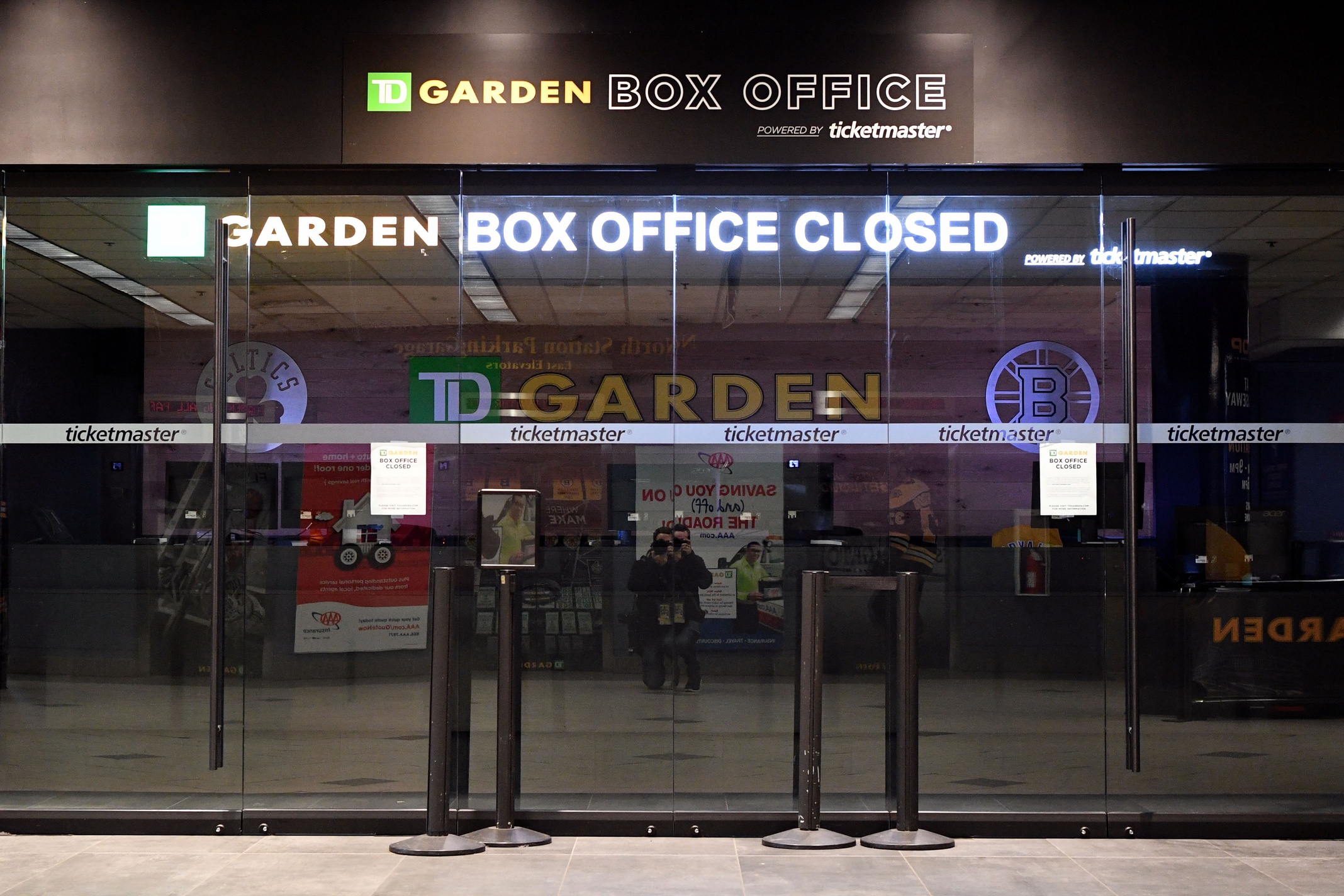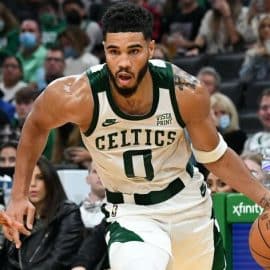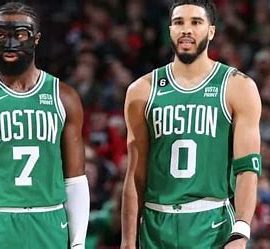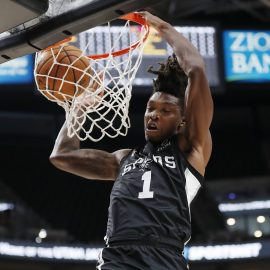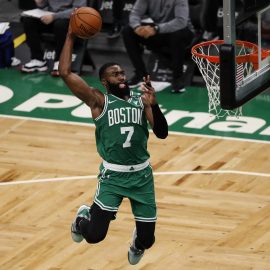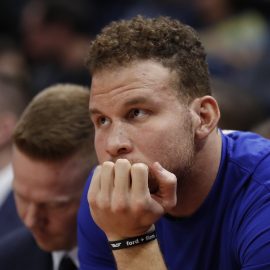Every morning, we compile the links of the day and dump them here… highlighting the big story line. Because there’s nothing quite as satisfying as a good morning dump.
Over the weekend, ESPN’s Brian Windhorst reported the league has a 25 day plan for players to return, which includes 11 days of individual workout time and two weeks of a training camp.
…
June 1 is a nice, clean start time. There might be no chance it happens, but again, by starting this on the most optimistic timeline, you’ll see how quickly challenges can arise. A June 1 start gives the NBA 14 weeks to restart the season and crown a champion.
Let’s also assume the Las Vegas plan is in place. It’s a central location with two courts that gives the NBA the option of double-barreled basketball action or alternating games while allowing for full pregame warmups so the league can have a full day of games that basically start once the previous game ends.
The 25 day plan means teams would travel to Las Vegas on June 26. A two-day rest period means basketball can return, in some form, on June 29. We’ve used four weeks to prepare for this. There are 10 weeks left.
So, how much basketball can the NBA squeeze into those ten weeks?
Well, ideally, the NBA would have as abbreviated a conclusion to the regular season as possible. That would mean picking some arbitrary number of games and getting however many teams are invited to the conclusion of the season to that total, in order to be as fair as possible with seeding.
Of course seeding loses some of its value in an environment where every game is played on a neutral court with few spectators.
Once the playoffs start, John outlines a scenario where the first two rounds are both best of five affairs—which assumes that the league will keep the sixteen team format.
The NBA’s goal here is not so much statistical continuity–that’s pretty much out the window–as it is salvaging as much revenue as possible.
So, let’s talk about where the league’s revenue comes from, from most to least obvious:
- Tickets
- Concessions
- Merchandising
- Broadcast rights (local and national)
- Sponsorships (local and national)
Taking the first three, tickets and concessions are non-starters under every plan currently under consideration. Merchandising is tied into the overall economy, and while I think there’s going to be a veritable explosion of spending once “social distancing” becomes an unpleasant memory for people who need to be around other people in order to retain their sanity, the fact is, people aren’t spending much on luxuries right now.
That leaves broadcast rights and sponsorships.
For local broadcasts, the Celtics get a chunk of revenue from the various Celtic-themed shows that run on NBC Sports–and they’re continuing to generate revenue from the replays of classic Celtic games. However, the real money makers for individual NBA teams are the rights fees and ad revenue splits that networks pay to air each game. When it comes to calculating salary cap projections, those figures assume an 82 game regular season, but they do not work as a lump-sum payment for a full season.
There are also the sponsorship deals that come in two forms: The sponsorships that companies pay to be associated with the team during broadcasts and sponsorships and ad revenue from within the venue. As with gate receipts and concessions, teams are not going to be bringing in any money–or very little money–from in-facility deals like the ribbon ads, the scoreboard ads, and the “Carl’s Junior Play of the Game” stuff.
Some of these sponsorships are paid in full for a full year. Deals like “The official ______ of the _______” tend to be of that sort. You get that money rain or shine.
But the in-game promotions are, like the broadcast rights fees and ad revenue, most often per-game deals.
Now, allegedly, 62% of the NBA’s ad revenue comes from the playoffs, but let’s say that 50% of the total TV revenue in a given season comes from the playoffs, because the NBA also gets certain fixed fees for the right to broadcast the game itself, as well as a portion of ad revenues during the game.
We need to calculate approximately how much of the overall “Basketball related income” comes from TV.
This can be done by taking the salary cap, doubling it, and then multiplying it by 30 (30 teams & the cap is 1/2 of basketball related income).
The 2019/20 salary cap is $109.1M, so that means that projected BRI for the league in 2019/20 was $6.546B.
The 8 year national TV deals that the league signed in 2015 scale from $930M in 2016/17 to $2.6B in 2023/24. Let’s assume the deal increases by a fixed percentage annually, which comes to about 12%. That means the league was expecting to get $1.17B from national TV contracts this year.
Local broadcast contracts amounts are seldom reported, but are believed to range between $120M and $150M per team. Use $135M as a mean, and you get $4.05B in local TV revenue, meaning that $5.22B of the league’s revenue, give or take, comes from TV.
The balance comes from sponsorships, game-day revenue and merchandising.
A little over three-quarters of the season has been completed. If the league shoots for a 70 game regular season, that’s a half a billion dollars in lost local TV revenue (70/82) * 4.05B = $3.45B. If half of the NBA’s national TV revenue comes from the regular season, then the national TV contract is only going to take about an $18M hit from the loss of regular season games.
If we assume that other revenue sources–tickets, concessions, sponsorships, merchandising, are going to be off by 20%–based on the loss of 12 regular season games (15% of the season) as well as a four month downturn in merchandising sales (33% of the year), we can calculate what the NBA stands to lose under the ‘best case’ scenario where they’re able to resume the season and play a full postseason:
Local TV: -$500M
National TV: -$18M
Other BRI: -$330M
Total hit: -$848M
Cap impact: -$14M
However, that’s all back-of-an-envelope sketching, and it assumes that the NBA is able to produce a semblance of the familiar playoff format. This also discounts the trickle of incremental revenue that the league–and individual teams–are still generating from content like NBC Sports’ re-broadcast of classic Celtic games.
At the same time, I’m willing to stand by that figure as a best possible scenario, meaning that the likely impact on this year’s cap is probably going to be worse.
Add The Sports Daily to your Google News Feed!
